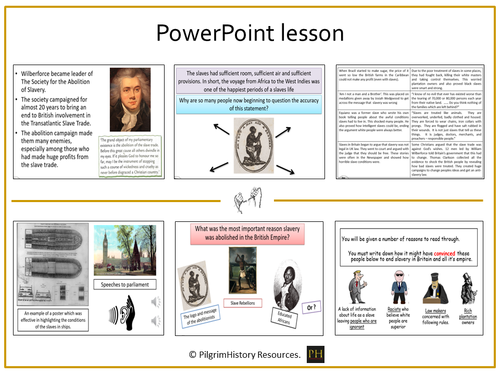


Why was the slave trade finally abolished in Britain and her Empire and why did it take so long to achieve?
Why were arguments in the eighteenth century challenged so rigorously and overturned in the nineteenth?
Which people inspired its abolition and who was against this?
Students decide which arguments were being put forward to the plantation owners, racists, people who were ignorant and law makers to end the slave trade.
They then prioritise the most important arguments in challenging these peoples’ staunch perceptions.
The second part of the lesson is a case study of William Wilberforce. Through video, audio and source work, students build up a history of the great man and decide how and why he is significant (this is a differentiated task dependent upon ability).
The final part of the lesson uses an interactive spinning wheel with key words used throughout the course, which the students have to define and explain their links to slavery.
The lesson is enquiry based with a key question using a lightbulb posed at the start of the lesson and revisited to show the progress of learning.
The resource includes suggested teaching strategies, retrieval practice, differentiated materials and comes in Powerpoint format if there is a wish to adapt and change.
Get this resource as part of a bundle and save up to 28%
A bundle is a package of resources grouped together to teach a particular topic, or a series of lessons, in one place.
Something went wrong, please try again later.
An excellent and engaging resource.
Report this resourceto let us know if it violates our terms and conditions.
Our customer service team will review your report and will be in touch.